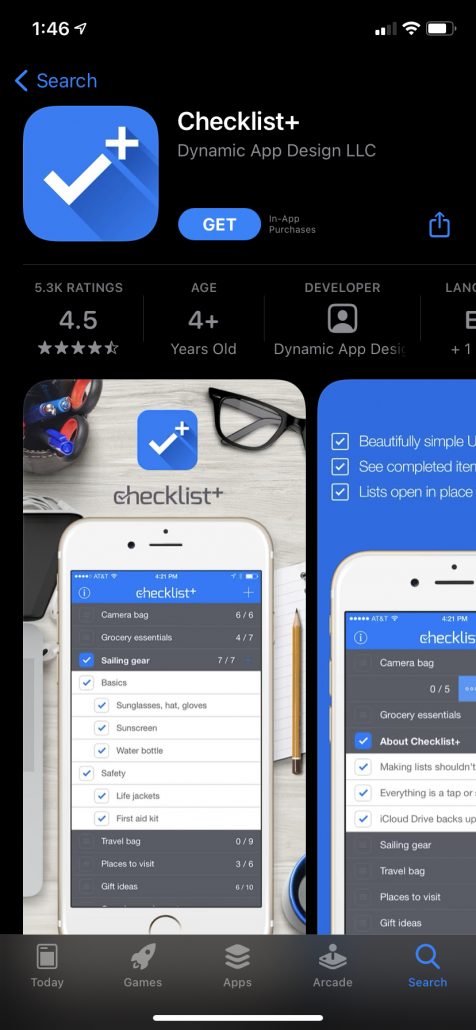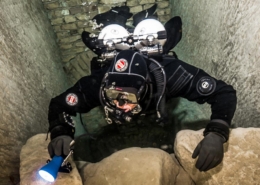11 Useful Apps to Improve Your Technical Diving
By Markus Ehmann
There are many apps readily available for scuba diving, yet the question is always which of these are truly useful, especially when it comes to requirements for technical diving.
With this list, we give you some examples and suggestions that can be a helpful add-on during the surface interval and in preparation for your next technical dive. If you are looking for recommendations for recreational diving apps, you will find an interesting article here.
Keep in mind, technical diving is on a broad spectrum and as such, the following recommendations have to be considered from your personal level of training, diving environment (caves, wrecks, depth), and equipment (open circuit or rebreather/CCR).
1. MultiDeco
Let’s start with one of the main tools you will be using: dive planning.
MultiDeco offers the full set of algorithms, from VPM-B to Buehlmann’s ZHL, with customizable gradient factors. Planning can be done for multi-level dives and the results include runtime and deco stops, plus CNS rates and gas density. You can not only set the basic parameters for your plan (e.g. descent and ascent rates, stop levels and gas consumption), but also highlight monitoring criteria, such as partial pressures of Oxygen, CNS and a diluent check for rebreathers.
A neat feature is that you can reverse-plan a maximum dive time, depending on the amount of gas available. This goes for both open circuit gas as well as available rebreather bailout. You will get immediate feedback about the limits of your gas for contingency planning and where the bottleneck in your gas supply is.
The CCR bailout can be configured to reflect increased gas consumption rates (for example in case of a CO2-hit) or in order to exit a cave, when you need to make your way back before starting your ascent and decompression stops.
A gas mixing application for Nitrox and Trimix is also part of the package. It comes with a range of useful tools, like best mix for depth, EAD (equivalent air depth) and MOD (maximum operating depth) calculations, top-up of pre-filled tanks and fill capacity of your supply gas.
2. Subsurface-mobile
Subsurface is an open-source logbook software on multiple platforms. It not only offers the ability to track your dives in the cloud and between PCs and smartphones, but the mobile version lets you conveniently upload dives via Bluetooth from your dive computer right after surfacing. The dive locations can be tracked via GPS on your phone or using the map.
The cloud functionality allows you to have a deeper look into the profile on your PC later. This comes in handy for debriefing or training, for example when you compare different deco-algorithms and the heatmap-function to analyze the decompression stress of your ascent profile.
Being independent of a manufacturer, Subsurface can be used with a multitude of different dive computers and the developing team is always quick to update with the latest functionalities. This is great if you are progressing on you technical diving career and might switch dive computers along the way, from recreational to technical.
Best of all, this app is free!
3. CCR-Manager
This app is basically a tracking tool for all the consumables and maintenance of your rebreather. It starts with the configuration of your CCR, based on number of O2-cells, batteries and displays. In addition, you can enter scrubber time and intervals to disinfect your loop on a regular basis.
The CCR-Manager then tracks the logged dives and subtracts that from the remaining time for scrubber and batteries. The remaining lifetime for sensors and disinfection is based on start of cycle versus the current date.
In essence, this gives you a quick and easy chart on planning your dive trips and what needs to be prepared beforehand or ordered in advance. With this app, you shouldn’t be in a position not to know when your oxygen sensors need replacing or if the scrubber doesn’t offer enough capacity for the planned dive time.
Logging the dives for tracking also gives you a mini-logbook, though at a reduced functionality when compared to other apps on the market.
4. DAN
DAN’s software version for your smartphone allows you to keep a digital copy of your insurance credentials with you.
The main advantage for this app though, is an SOS button that allows you to directly call the emergency hotline, send your GPS-position and it describes some emergency procedures.
This is extremely helpful in case of an emergency when you have all the relevant data at hand and can directly connect this information with a diving medical officer.
Lastly, you can also access the latest articles from the DAN-blog while checking in once in a while.
5. Facebook
I know what you think, is this really an app for technical diving?
In a way, this is your research tool for some serious questions about your next diving project. While I would never recommend to ask about health, safety and equipment recommendations online, you can research a lot about current conditions on dive sites, wrecks and caves from people that just dove it the other day and like to share pictures and videos.
For many areas, there are also specialized groups available that document and share the latest information about general technical equipment (rebreathers, lights, etc.) and also specialized gear that is not yet widely available (Sidemount D-rings to name an example).
Now, people tend to recommend what they know and the more expensive the equipment, the less people have experienced competitive alternatives. But every recommendation is linked to a person and most of the time you can see what they actually do with it and if that fits your kind of diving and intended application. Are you looking for a Sidemount CCR for example? Have a look at what the different brands and divers do with their chosen gear and you’ll be able to recognize the different dives, systems and tweaks this equipment is used with.
The same goes for a prospective tech instructor for your next course. Does he or she only post pretty pictures? Or is there a balanced mix between training dives with students and their own diving and exploration at the level they teach? If they mention their students in their post, you can also connect with them easy to get their feedback.
6. Checklists
Checklists are a very useful tool in technical diving to avoid any mistakes or misses, when assembling and testing your gear. They can also be broken down in different steps to keep them simple: assembly, pre-check, final check before a dive.
There are a couple of apps for checklists out there, so there is no need to name a specific one here. Just choose whichever one looks good to you.
7. Shearwater Cloud
The app for Shearwater dive computers allows you to download dive logs via Bluetooth and synchronize with their cloud onto the same desktop version of the software. You can also update your firmware.
8. myGas Agent and BOC Agent
Do you need Helium for your next dive?
As prices for gas are rising, many technical divers blend their own mix. Both apps allow you to calculate pricing for supply, order and arrange pick-up locations.
9. Paralenz
Obviously only relevant if you use one, this app gives you access to the videos and pictures taken with your Paralenz camera. You can also change the settings and update the firmware. The camera itself is easy to use, even on a technical dive with a depth rating of 820 ft. / 250 m.
10. Tapatalk
Apart from social media, there are still internet forums out there, and this software allows you to get some of them in one place and follow the latest threads and messages. At this moment, the available forums include: Cave Diver’s Forum, The Deco Stop, Rebreatherworld.com, DeeperBlue.com, HHS Software (MultiDeco & V-Planner)
11. DeeperBlue.com
Coming from the largest website for diving, this app lets you access different news, features, videos and photos about diving. Beyond technical diving, this also includes freediving and travel and at this point in time, any coronavirus-related impact on diving.
You can see that there are a lot of useful apps out there for technical diving. Each have their own benefits, before or after the dive. With some innovative new underwater housings becoming more available and affordable, there will probably also be apps for use underwater in the near future. But that is another matter, altogether.
Did we miss apps any that you use for technical diving? Let us know in the comments below!




















 Natalie L. Gibb
Natalie L. Gibb
发表评论
想加入讨论吗?请发表您宝贵的意见!